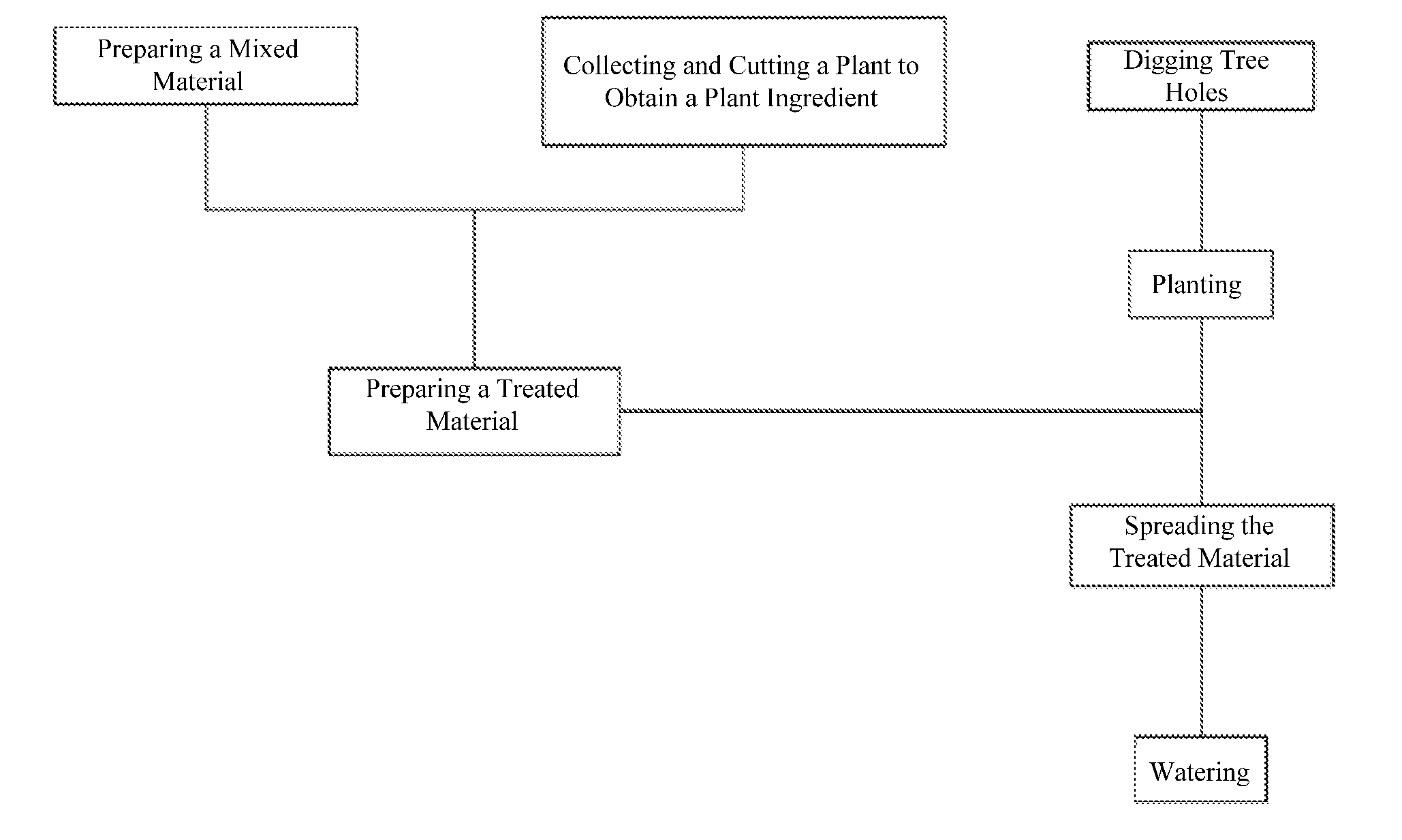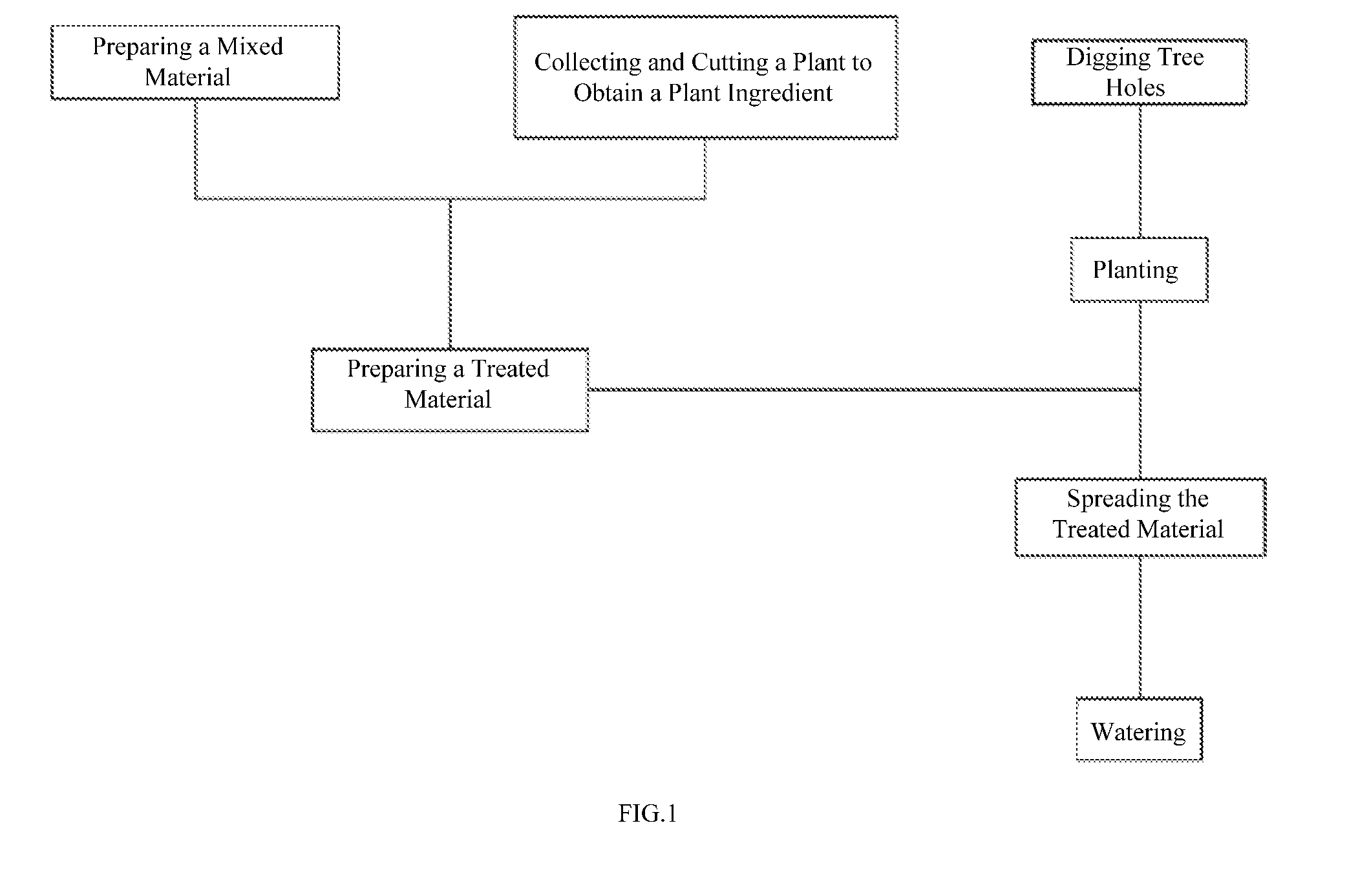Water and Soil Conservation and Ecological Restoration Method of High and Steep, Abandoned Slag Piles at High Elevation with Large Temperature Difference in Dry, Hot Valley
a technology of high elevation and slag piles, applied in the field of water and soil conservation, can solve the problems of reducing the productivity of land, seriously threatening the life safety of people, and affecting the life safety of people, and achieves the effects of enhancing the soil fixing effect of the treated material, increasing the strength of the treated material shell, and increasing the fine particle components and content of the cover soil
- Summary
- Abstract
- Description
- Claims
- Application Information
AI Technical Summary
Benefits of technology
Problems solved by technology
Method used
Image
Examples
embodiment 1
[0054] successively executing the following steps in No. 1 experimental plot:
[0055]A. Uniformly mixing cement with water, adding cover soil collected from the construction site according to a weight ratio of the cement to the cover soil at 3:100, and uniformly stirring, thereby acquiring mixed material;
[0056]B. Collecting fresh and non-dry plants, and then cutting the plants into sections in length of 5-10 cm, thereby acquiring plant ingredients;
[0057]C. Mixing the plant ingredients acquired from step B, the mixed materials acquired from step A and grass seeds, and uniformly stirring, thereby acquiring treated material, wherein the weight ratio of the grass seeds to the cover soil is 3:100 and the weight ratio of the plant ingredients to the cover soil is: 4:100;
[0058]D. Digging vertical deep holes as the tree holes at 3 m*3 m intervals on the slope, wherein the diameters of the tree holes are 60 cm-80 cm and the depth is 60 cm; covering a cement mortar layer at the bottom of the tr...
embodiment 2
[0063] successively executing the following steps in No. 2 experimental plot:
[0064]A. Uniformly mixing clay with water, adding cover soil collected from the construction site according to a weight ratio of the clay to the cover soil at 5:100, and uniformly stirring, thereby acquiring mixed material;
[0065]Executing the following steps identical to steps B, C, D, E, F and G in Embodiment 1.
[0066]On the 30th day after step G is finished, starting to measure the moisture content of the soil at 10 cm below the soil surface of No. 1 experimental plot for the first time, recording, and then repeating the measurement once per 30 days and recording (see Table 1 for the recorded data); in the 12th month after step G is finished, measuring the content of organic matter and nitrogen in the soil on the soil surface of No. 2 experimental plot, recording, and then repeating the measurement once per 12 months and recording (see Table 2 for the recorded data).
embodiment 3
[0067] successively executing the following steps in No. 3 experimental plot:
[0068]A. Uniformly mixing coal ash with water, adding cover soil collected from the construction site according to a weight ratio of the coal ash to the cover soil at 3:100, and uniformly stirring, thereby acquiring mixed material;
[0069]Executing the following steps identical to steps B, C, D, E, F and G in Embodiment 1.
[0070]On the 30th day after step G is finished, starting to measure the moisture content of the soil at 10 cm below the soil surface of No. 3 experimental plot for the first time, recording, and then repeating the measurement once per 30 days and recording (see Table 1 for the recorded data); in the 12th month after step G is finished, measuring the content of organic matter and nitrogen in the soil on the soil surface of No. 3 experimental plot, recording, and then repeating the measurement once per 12 months and recording (see Table 2 for the recorded data).
[0071]Contrasting embodiment 1: ...
PUM
| Property | Measurement | Unit |
|---|---|---|
| length | aaaaa | aaaaa |
| diameters | aaaaa | aaaaa |
| diameters | aaaaa | aaaaa |
Abstract
Description
Claims
Application Information
 Login to View More
Login to View More - R&D
- Intellectual Property
- Life Sciences
- Materials
- Tech Scout
- Unparalleled Data Quality
- Higher Quality Content
- 60% Fewer Hallucinations
Browse by: Latest US Patents, China's latest patents, Technical Efficacy Thesaurus, Application Domain, Technology Topic, Popular Technical Reports.
© 2025 PatSnap. All rights reserved.Legal|Privacy policy|Modern Slavery Act Transparency Statement|Sitemap|About US| Contact US: help@patsnap.com


